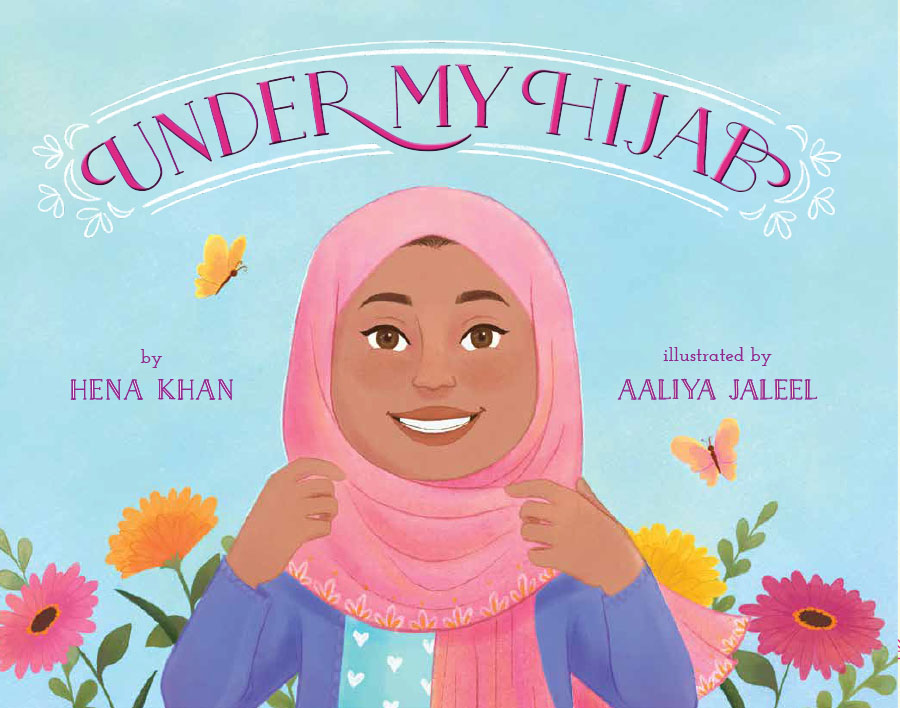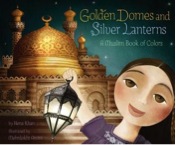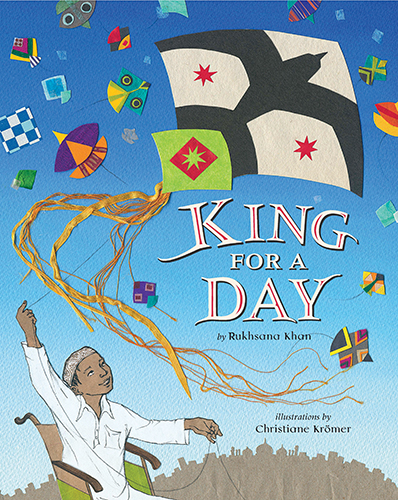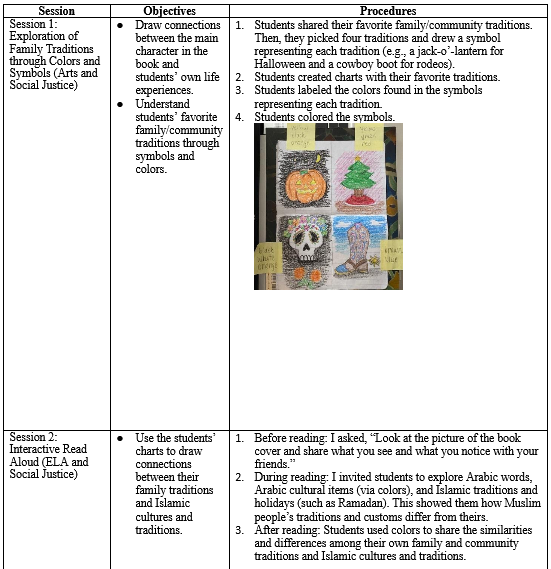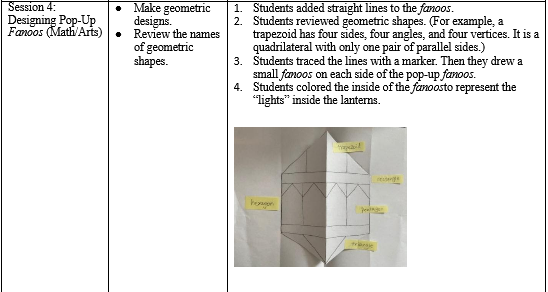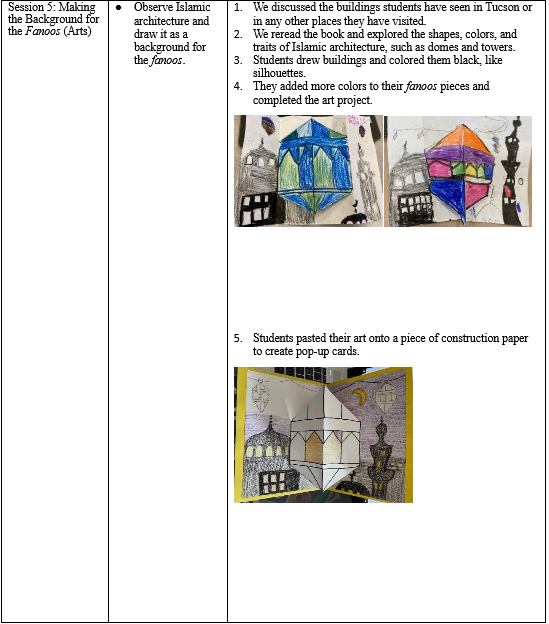Young Children’s Cross-Cultural Studies with Golden Domes and Silver Lanterns
Chika Hayashi-Willis
I started teaching kindergarten at Van Buskirk Elementary School in 2004 and became a K–5 Opening Minds through Arts (OMA) Arts Integration Specialist in 2016. Van Buskirk is a Title 1 PreK–5 public school in the southern part of Tucson. This area, called the Tucson Rodeo Ground, has been strongly influenced by Mexican cultures. In the 2020–2021 school year, Latinx students accounted for over 85% of the school’s total enrollment, followed by Pascua Yaqui and Tohono O’odham students, Asian American students, and European American students (TUSD, 2020). For many years, Van Buskirk has been committed to integrating the fine arts with Spanish/English bilingual education and, in 2007, it officially started OMA Gold and Spanish Two-Way Dual Language programs. The OMA Gold program allows all K–5 students to receive dance, opera, theater, visual arts, and instrumental music lessons, enhancing their engagement and strengthening their academic and social skills. Over my 20 years of experience as a primary grade classroom teacher and Arts Integration Specialist, I have seen the effectiveness of arts integration in teaching literacy, social studies, math, and science. I love arts integration and work collaboratively with classroom teachers to include arts in areas across the curriculum.
As I am a Japan-born, first-generation immigrant with a transnational identity, being involved in Van Buskirk’s predominantly Latinx school community has been an astonishing cultural experience for me. The school provides rich opportunities for appreciating Latinx heritage and culture, and many students find their own cultures and life experiences in the school’s books, artifacts, and events. However, though their cultures are well represented, Van Buskirk’s students have also suffered from a lack of opportunities to learn about other cultures. I noticed that many of them do not fully grasp the multicultural nature of their community and global society. Therefore, I began to think that an important way to support them in embracing diversity would be to teach them about the histories, values, beliefs, and perspectives of people from different cultural and linguistic backgrounds. Our school district offers professional development courses and workshops, so I started attending them to build my knowledge of multicultural education and curriculum. I learned that global, international, and multicultural children’s literature is a powerful resource as mirrors, windows, and sliding glass doors (Bishop, 1990), not only teaching children about diverse cultures, but also expanding their perspectives toward many things in their societies and world. Such literature became a valuable resource in my lessons, opening doors for students to acknowledge diversities and increase their intercultural awareness.
Global Literacy Community
In American society, I have noticed that Arab Americans and people from Middle Eastern countries have been underrepresented. There are so many things we do not know about them. Personally, I had very limited knowledge about Islamic cultures and society, and I was not sure how to approach learning and then teaching about these cultures. I felt I should be very careful, like stepping on thin ice. I thought Muslim and Islamic themes would be difficult to bring into my lessons. The bottom line was that I simply avoided these themes.
When I was asked to join the global literacy community group, I thought it was a great opportunity to educate myself. I needed more information and resources to ease my hesitations and gain confidence as an Arts Integration Specialist when sharing Islamic arts with my students. In the study group meetings, we read and explored children’s literature with a wide range of genres and themes, such as Under My Hijab by Hena Khan and Aaliya Jaleel (2019), Golden Domes and Silver Lanterns: A Muslim Book of Colors by Hena Khan and Mehrdokht Amini (2012), The Arabic Quilt: An Immigrant Story by Aya Khalil and Anait Semirdzhyan (2020), and King for a Day by Rukhsana Khan and Christine Kromer (2013). Through these stories, we learned about the diverse lives of contemporary Muslim families and their traditions and histories, and we also shared teaching ideas about how to use these stories in the classroom.
Book Selection for Hybrid Arts Teaching
During the 2020–2021 school year, at the height of the COVID-19 pandemic, teaching visual arts through Zoom was quite challenging. Many students were in difficult learning environments with internet issues and limited art materials, which led to disconnections and teaching–learning difficulties. I diligently focused on engagements as much as I could because I knew students had been looking forward to taking my art class and would enjoy creating art with me. The beautiful illustrations in Golden Domes and Silver Lanterns attracted me. The image of the silver lantern, fanoos, on the book’s cover immediately caught my eye and reminded me of Mexican, Chinese, and Japanese lanterns that people decorate during festivals. I thought the story would motivate students to learn about the Islamic arts and cultures they rarely see, to make connections to the lanterns they see during festivals in their communities. I studied the cultural meanings and geometric designs of the fanoos, and developed a lesson on the topic for Grade 1. It was a visual art integrated English Language Arts, math, and social justice lesson for a hybrid learning setting.
Visual Arts Integrated ELA, Math, and Social Justice Lesson for Grade 1
In Golden Domes and Silver Lanterns, the narrator, a young Muslim girl, uses colors to share aspects of Islamic life, holidays, foods, artifacts, and traditions. The illustrations are beautiful, dynamic, and richly detailed, and the book includes an Arabic glossary with English translations in its back matter.
Visual Arts (Arizona State Standards) (Arizona Department of Education, 2021)
- Objective: Students will connect their cultures with other cultures through art observations and will follow directions to create a piece of pop-up art.
- Standard 1: Explore uses of materials, tools, and approaches (using elements of modern art, applying artistic ideas from diverse cultures, etc.) to create works of art or design (VA.CR.2.1a).
- Standard 2: Identify various reasons why people from different places and times make art (to express themselves, to tell a story, to make things look beautiful, to remember special people and events, etc.)
(VA.CN.11.1).
ELA (Arizona State Standards) (Arizona Department of Education, 2021)
- Objective: Students will explore new cultural experiences and develop new insights into the self, other people, and the world.
- Standard 1: Use illustrations and details in a story to describe its characters, settings, or events. (1.RL.7).
- Standard 2: Describe characters, settings, and major events in a story using key details (1.RL.3).
Math (Arizona State Standards) (Arizona Department of Education, 2021)
- Objective: Students will name geometric shapes, use attribute language to describe shapes with defining characteristics, and draw and build shapes to understand shape construction.
- Standard: Distinguish between defining attributes (e.g., triangles =closed and three-sided) versus non-defining attributes (color, orientation, overall size, etc.) for two-dimensional shapes; build and draw shapes that possess defining attributes (1.G.A.1).
Social Justice (Arizona Department of Education, 2021)
- Objective: Students will compare and contrast their own family traditions with other cultures’ traditions.
- Standard: Understand that how one person’s family does things is both similar to and different from how other people do things; develop an interest in both (Identity. ID.K–2.5).
Teaching Reflections
Some students had difficulty understanding the procedures for the above lesson, especially creating the pop-up card. It is much easier to do this kind of art lesson in person. The lesson began remotely, but I needed to step into the classrooms to physically demonstrate the project in front of the students. I felt their relief as I checked on their work. Surprisingly, this helped, not only students in the classrooms, but also the students on Zoom, because those who had worked on the project in the classroom shared their strategies and tips with peers via Zoom. Students are sometimes better instructors and teach one another effectively.
Golden Domes and Silver Lanterns is a great piece of children’s literature for teaching colors and exploring Islamic arts and cultures. I also see this book as having multiple possibilities, and I used it successfully with art integration. Grade 1 students learned Islamic arts, traditions, and cultures with which they were unfamiliar, and they came to recognize that many people across the world have traditions that are both similar to and different from those of their families. Golden Domes and Silver Lanterns could be paired well with My Colors, My World/ Mis Colores, Mi Mundo by Maya Christina Gonzalez (2013), a Spanish–English bilingual story about a girl who uses colors to explore the desert world in which she lives.
Final Thoughts
The global literacy community was a great study group experience through which I learned how to use children’s literature about Muslim and Islamic themes at K –5 settings. I especially valued the monthly meetings, where I learned various approaches for integrating literature in the classroom. The group members shared amazing lesson plans and engagement ideas with me. I am glad that I was able to learn more than I expected.
Since the 9/11 terrorist attacks and the subsequent travel restrictions, people with Muslim backgrounds have been viewed with suspicion in the United States. They are also often misrepresented as villains, enemies, or dehumanized characters in the movies, TV shows, and video games to which children and teens are exposed every day. I am afraid that the overrepresentation of such negative images in the media has continued to create biases, prejudice, and stereotypes about Middle Eastern nations and cultures and people. I think it is time to share their stories with students. Books are great tools for confronting these issues.
Children’s Literature Cited
Gonzalez, C. M. (2013). My colors, my world/ Mis colores, mi mundo. New York: Lee & Low Books.
Khalil, A. (2020). The Arabic quilt: An immigrant story. Illus. A. Semirdzhyan. Thomaston, ME: Tilbury.
Khan, H. (2012). Golden domes and silver lanterns: A Muslim book of colors. Illus. M. Amini. San Francisco: Chronicle.
Khan, H. (2019). Under my hijab. Illus. A. Jaleel. New York: Lee & Low Books.
Khan, R. (2013). King for a day. Illus. C. Krömer. New York: Lee & Low Books.
References
Arizona Department of Education (2021). Academic Standards. https://www.azed.gov/standards-practices/academic-standards
Bishop, S. R. (1990). Mirrors, windows, and sliding glass doors.
https://scenicregional.org/wp-content/uploads/2017/08/Mirrors-Windows-and-Sliding-Glass-Doors.pdf
Tucson Unified School District (TUSD). (2020). TUSD enrollment by federal ethnicity by school (2020 –2021). http://tusddatareports.tusd1.org/EnrollmentByFederalEthnicity.html
Chika Hayashi-Willis is an OMA (Opening Minds through the Arts) Arts Integration Specialist at Van Buskirk Elementary School. (ORCID https://orcid.org/0000-0003-1583-6620)
© 2021 by Chika Hayashi-Willis
WOW Stories, Volume IX, Issue 2 by Worlds of Words is licensed under a Creative Commons Attribution-NonCommercial-ShareAlike 4.0 International License.
Based on a work by Chika Hayashi-Willis at https://wowlit.org/on-line-publications/stories/volume-ix-issue-2/10/.
WOW stories: connections from the classroom
ISSN 2577-0551

